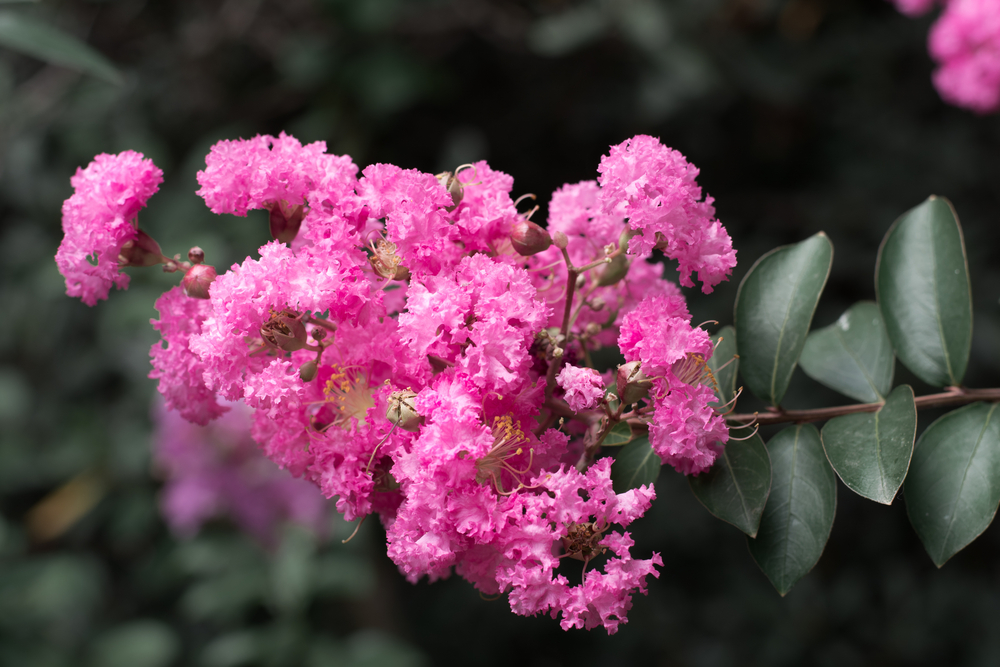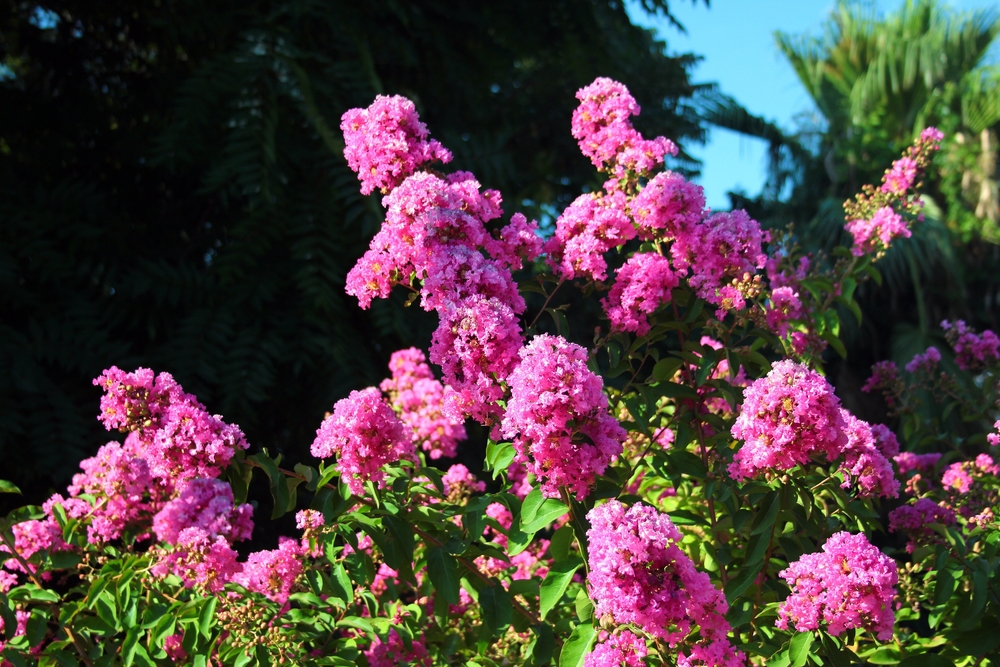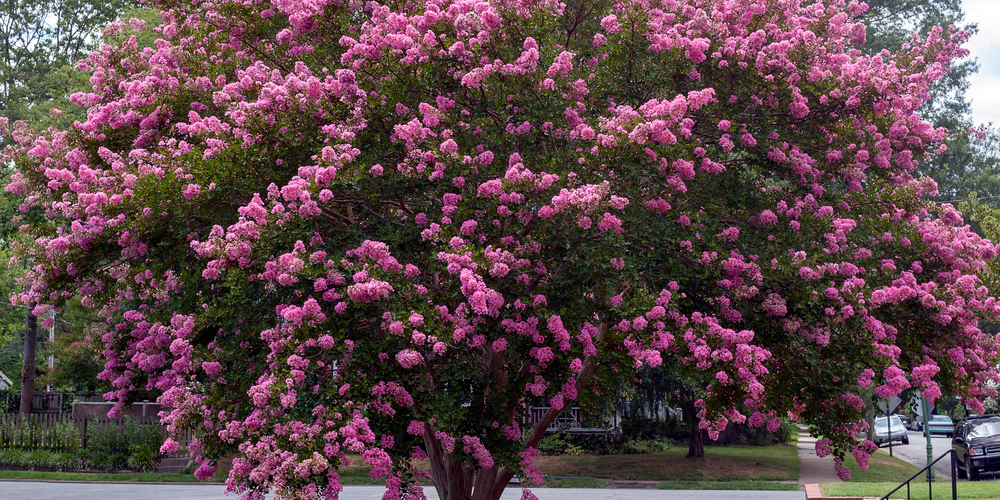Crape myrtles are a beautiful garden staple, and with so many different varieties available, there is sure to be one that fits your needs. From pink blossoms to purple leaves, you can find the perfect crepe myrtle for your landscape. Let’s look at some of the most popular crepe myrtle varieties.
Types of crepe myrtle

Crepe myrtles have the botanical name Lagerstroemia indica and are part of the Lythraceae botanical family. They can get fairly tall and grow to a height of up to 25 feet tall, depending on the variety.
The first step to growing a crepe myrtle tree is choosing the right place to plant the tree. You need to consider factors like how much sun the area gets, how windy it is, and what type of soil you have in your yard. The best zone for growing crepe myrtles is zone 6 through 10, so you want to be sure that the area you choose is within those zones. Crepe myrtles like full sun and well-drained soil, so make sure your chosen spot fits these requirements as well.
Here are some crepe myrtle varieties that you may like to consider planting.
Petite Pinkie
Petite Pinkie Crepe Myrtles are a small, dwarf variety, with an upright growth habit that rarely exceeds 5 feet. Their pink flowers bloom in summer and attract butterflies to the garden. These plants prefer full sun and well-draining soil, and they can be grown in containers if preferred. The trees compact size makes it a great choice for anyone with limited space or an urban yard.
Muskogee
The Muskogee Crepe Myrtle is hardy to zones 6 to 9, with an upright growth habit that reaches 20 feet. These trees have lavender-colored flowers in late summer or early fall. The foliage turns yellow orange in the fall and is a stunning contrast to the flowers.
Muskogee Crepe Myrtle plants prefer full sun and well-draining soil, and they work well as hedges or screens.
Queens crepe myrtle
The Queens Crepe Myrtle is a popular variety that features stunning flowers in summer. Blooms come in a variety of colors from white or pink to lavender and measure about three inches wide.
These fast-growing plants reach 30 feet tall and can also spread up to 20 feet wide. They thrive in full sun or partial shade, making them ideal for hedges, screens or borders. In the fall the large leaves turn red and orange.
Indica Crepe Myrtle
Indica crepe myrtles are one of the most popular varieties of the tree. They are particularly common in the south and are native to Asia, typically grown in southern or eastern parts of China.
These trees have large blooms, usually in shades of pink or red, but they can also come in other colors like white and purple. Indicas tend to be taller than other crepe myrtle varieties, growing between 15 and 30 feet in height.
These trees have dark green foliage, and the leaves are typically one to three inches long. There are several types of Indica crepe myrtle, including ‘Acoma,’ ‘Hopi’ and ‘Centennial Spirit.’
Japanese Crepe Myrtle
The other main type of crepe myrtle is known as the Lagerstroemia fauriei, or Japanese crepe myrtle. These trees are native to Japan and were first introduced to the U.S. in the early 20th century. They are a medium sized tree, growing between 20 to 30 feet tall when fully grown. They also produce smaller blooms, usually in shades of white and have cinnamon colored bark.
If you live in an area where crepe myrtles grow well, it is usually best to choose a Japanese crepe myrtle tree because they tend to be more drought-tolerant than indica crepe myrtles or other varieties. They are also hardy to cold weather and don’t need to be overwintered indoors.
Other crepe myrtle varieties include
- Natchez crepe myrtle
- Tuscarora crepe myrtle
- Pink velour crepe myrtle
Conclusion
No matter which variety you choose, crepe myrtles make a beautiful addition to any landscape and can be grown in containers or directly in the ground. They can be easily propagated using the roots or a cutting, which can be put directly into the soil.
Crepe myrtle has a fast growth rate which ensures that they will provide an immediate pop of color in the spring and attract butterflies and other pollinators to your yard. They need to be pruned in the winter or early spring to maintain their appearance and help encourage new growth.

